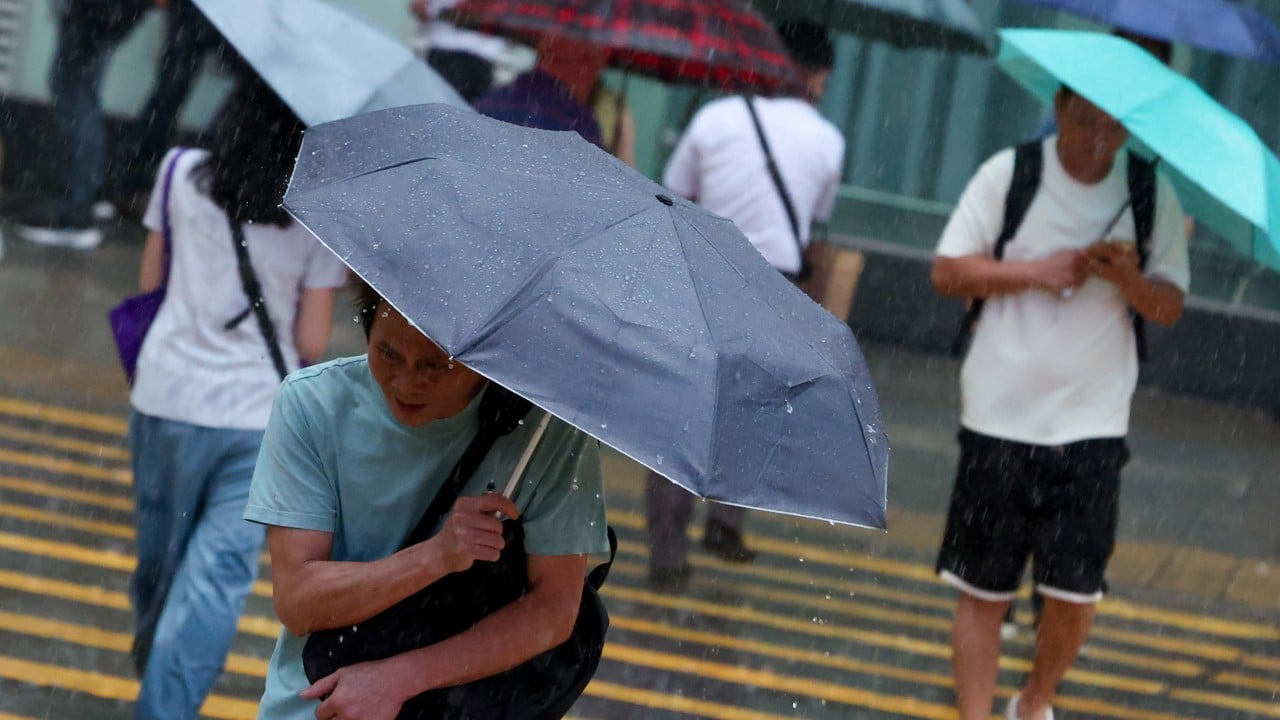It was a dark and stormy night in Hong Kong as the city braced itself for an impending deluge. The Hong Kong Observatory, the bastion of weather forecasting in the region, sent shivers down the spines of residents when it issued a red rainstorm warning late on Wednesday night. This ominous signal, hoisted at 11.45pm, served as a foreboding announcement of the heavy rain and thunderstorms expected to lash the city on Thursday and Friday.
The red rainstorm warning, a rare and grave alert, signifies that copious amounts of rain have either already inundated the city or are looming on the horizon, with precipitation levels surpassing 50mm (2 inches) per hour. The somber prediction painted a picture of impending chaos, with the likelihood of incessant downpours causing widespread flooding, traffic mayhem, and potential disruptions to daily life.
“Further heavy rain could cause, if not already caused, serious road flooding and traffic congestion and could disrupt normal school hours,”
cautioned the weather forecaster, driving home the severity of the situation. The red rainstorm signal unfurled just 23 minutes after an amber warning was raised at 11.22pm, signaling a rapid escalation in the intensity of the impending weather event. However, as swiftly as it appeared, the red alert gave way to the amber rainstorm signal at 12.45am as the rain slackened, offering a fleeting reprieve from the impending tempest.
The sudden issuance of a red rainstorm warning sent ripples of concern through the community, prompting residents to batten down the hatches and prepare for the tumultuous weather ahead. In a city known for its resilience in the face of natural disasters, the looming threat of heavy rain and thunderstorms served as a stark reminder of nature’s unpredictable power.
As meteorologists and weather experts delved into the intricacies of the atmospheric conditions that birthed this impending storm, the broader implications of such extreme weather events came into sharp focus. Climate change, with its fingerprints increasingly visible in the form of erratic weather patterns and extreme precipitation, underscored the urgent need for proactive measures to mitigate the impact of such natural phenomena on densely populated urban centers like Hong Kong.
“The red rainstorm warning serves as a stark reminder of the need for robust infrastructure and emergency preparedness in the face of escalating climate-related risks,”
remarked a climate scientist, highlighting the interconnectedness of weather events, urban planning, and climate resilience. The convergence of these factors painted a complex tapestry of challenges that cities worldwide must navigate as they confront the dual threats of climate change and urbanization.
As the red rainstorm warning faded into memory and Hong Kong resumed its bustling rhythm, the lingering echoes of the recent weather alert served as a poignant reminder of the fragility of human endeavors in the face of nature’s unfathomable might. The resilience of the city’s residents, the dedication of its meteorologists, and the specter of climate change cast a long shadow over the urban landscape, urging stakeholders to band together in a united front against the capricious whims of the elements.
In the aftermath of the storm, as the waters receded and life in the city returned to normalcy, the red rainstorm warning lingered as a cautionary tale, a reminder of the delicate balance between human civilization and the natural world. In a world where climate uncertainties loom large and weather extremes become the new normal, the red rainstorm warning served as a sobering wake-up call, beckoning us to heed the signs of nature’s unrest and forge a path towards a more resilient and sustainable future.









Leave feedback about this